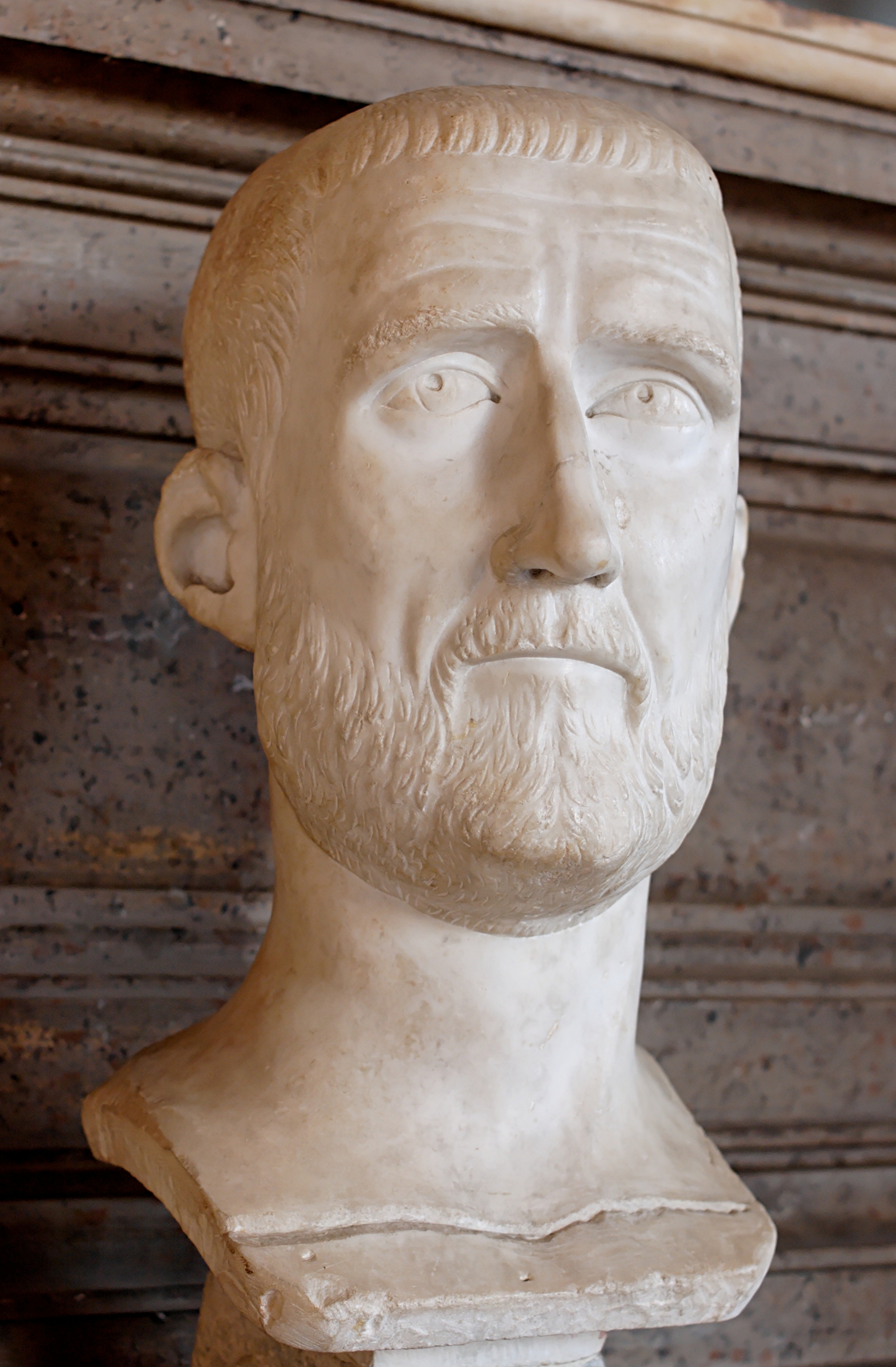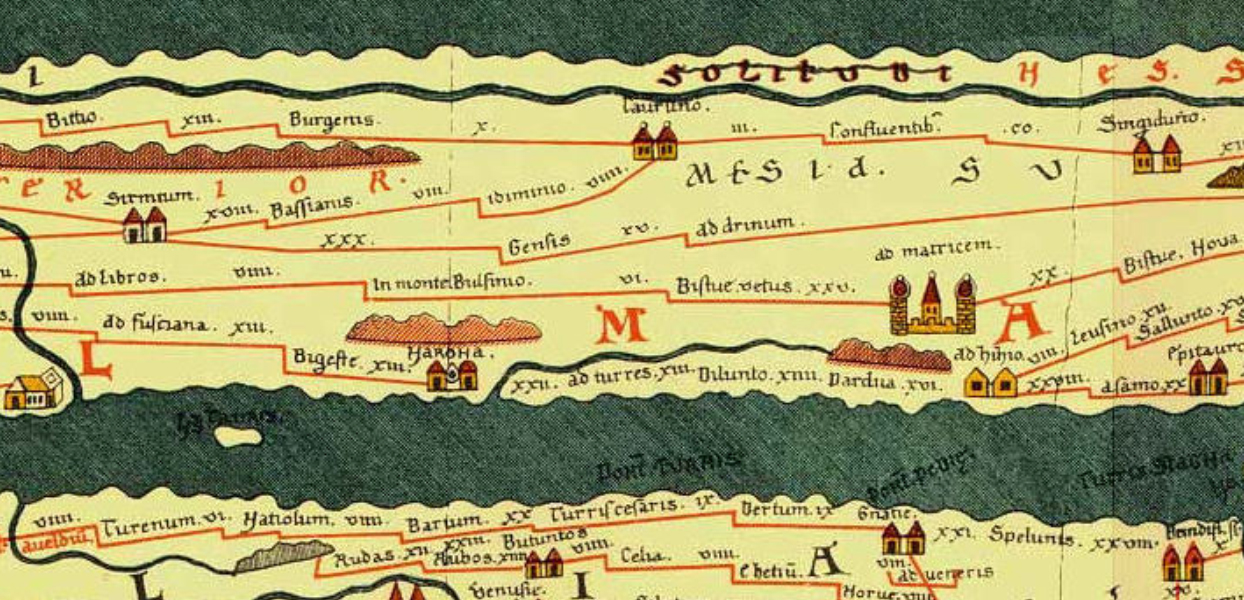|
Jadar Museum
The Jadar Museum ( sr-Cyrl, Музеј Јадра) is a history museum located in Loznica, Serbia. It has a permanent collection dedicated to man's activities in the area of Podrinje from prehistory until 1950. The museum is housed in the Old Pharmacy Building, which is the cultural monument of great importance. History The decision to create the museum was taken in 1984 by the Municipal assembly of Loznica, which decided on the building of "Old Pharmacy" to make it the city museum. The museum was opened on 14 September 1987 with a ceremony honoring two centuries of Vuk Stefanović Karadžić. Exposition Jadar Museum has a permanent collection dedicated to man's activities in the area of Loznica of prehistory until 1950. The setting is enriched with years and now has 171 archaeological objects, 410 ethnological, historical 516, 195 numismatic and more than 1500 documents and photos. In addition to the permanent exhibition at the ''Jadar Museum'' occasionally displayed tempor ... [...More Info...] [...Related Items...] OR: [Wikipedia] [Google] [Baidu] |
Loznica
Loznica ( sr-cyrl, Лозница, ) is a List of cities in Serbia, city located in the Mačva District of western Serbia. It lies on the right bank of the Drina river. In 2011 the city had a total population of 19,572, while the administrative area had a population of 79,327. Its name stems from the word "loza" (the Serbian language, Serbian word for ''vine''). Originally, its name was ''Lozica'' (Serbian language, Serbian for ''small vine''), but it later became ''Loznica''. History The oldest settlements on the territory of Jadar and Loznica can be traced to the Neolithic period when the Starčevo culture flourished from 4500–3000 BC. Illyrian tribes, Illyrian and Celtic tribes inhabited the region prior to the Roman Empire, Roman conquest in 75 BC. Roman conquest of the Balkan peninsula brought huge changes: the territory became part of the Roman province of Dalmatia. The most important settlement in Jadar was ''Genzis'', located near Lešnica, Serbia, Lešnica, while the ... [...More Info...] [...Related Items...] OR: [Wikipedia] [Google] [Baidu] |
First Serbian Uprising
The First Serbian Uprising ( sr, Prvi srpski ustanak, italics=yes, sr-Cyrl, Први српски устанак; tr, Birinci Sırp Ayaklanması) was an uprising of Serbs in the Sanjak of Smederevo against the Ottoman Empire from 14 February 1804 to 7 October 1813. Initially a local revolt against Dahije, renegade janissaries who had seized power through a coup, it evolved into a revolution, war for independence (the Serbian Revolution) after more than three centuries of Ottoman rule and short-lasting Austrian occupations. The janissary commanders murdered the Ottoman Vizier in 1801 and occupied the sanjak, ruling it independently from the Ottoman Sultan. Tyranny ensued; the janissaries suspended the rights granted to Serbs by the Sultan earlier, increased taxes, and imposed forced labor, among other things. In 1804 the janissaries feared that the Sultan would use the Serbs against them, so they Slaughter of the Knezes, murdered many Serbian chiefs. Enraged, an assembly chose Ka ... [...More Info...] [...Related Items...] OR: [Wikipedia] [Google] [Baidu] |
Archaeological Sites In Serbia
Archaeology or archeology is the scientific study of human activity through the recovery and analysis of material culture. The archaeological record consists of artifacts, architecture, biofacts or ecofacts, sites, and cultural landscapes. Archaeology can be considered both a social science and a branch of the humanities. It is usually considered an independent academic discipline, but may also be classified as part of anthropology (in North America – the four-field approach), history or geography. Archaeologists study human prehistory and history, from the development of the first stone tools at Lomekwi in East Africa 3.3 million years ago up until recent decades. Archaeology is distinct from palaeontology, which is the study of fossil remains. Archaeology is particularly important for learning about prehistoric societies, for which, by definition, there are no written records. Prehistory includes over 99% of the human past, from the Paleolithic until the advent o ... [...More Info...] [...Related Items...] OR: [Wikipedia] [Google] [Baidu] |
Museums In Serbia
A museum ( ; plural museums or, rarely, musea) is a building or institution that cares for and displays a collection of artifacts and other objects of artistic, cultural, historical, or scientific importance. Many public museums make these items available for public viewing through exhibits that may be permanent or temporary. The largest museums are located in major cities throughout the world, while thousands of local museums exist in smaller cities, towns, and rural areas. Museums have varying aims, ranging from the conservation and documentation of their collection, serving researchers and specialists, to catering to the general public. The goal of serving researchers is not only scientific, but intended to serve the general public. There are many types of museums, including art museums, natural history museums, science museums, war museums, and children's museums. According to the International Council of Museums (ICOM), there are more than 55,000 museums in 202 count ... [...More Info...] [...Related Items...] OR: [Wikipedia] [Google] [Baidu] |
Gensis (vicus)
Gensis was the Roman settlement vicus in Moesia Superior, now central Serbia, on Cer mountain near Lešnica. Tabula Peutingeriana It is recorded in the Tabula Peutingeriana as situated XXX m.p. south of Sirmium, on via Argentaria, a road leading in the direction of Drina; on the mountain Cer area, and XV m.p. from Ad Drinum (allegedly today's Loznica). Position However, the position of ''Gensis'' is not established because on the same mountain Cer are located ruins of the three different settlements that can be vicus ''Gensis'', Vidin Grad, Kosanin grad and Trojanov Grad. As none of these three sites has been explored, it is not possible to determine the exact position of vicus ''Gensis''. See also *Museum in Loznica *Vidin Grad *Koviljkin grad *Trojanov Grad References *Aleksandar Deroko, ''Medieval cities in Serbia, Montenegro and Macedonia'', Belgrade, 1950. *Massimiliano Pavan, ''From the Adriatic to the Danube'' Padova Padua ( ; it, Padova ; vec, Pàdova) is a ... [...More Info...] [...Related Items...] OR: [Wikipedia] [Google] [Baidu] |
Trojanov Grad
Trojanov Grad or Town of Trajan was a fortress on mountain Cer, central Serbia, which is being attributed to the mythical Slavic Emperor Trajan. Today it is possible to see only remains of one defense wall. See also *Koviljkin grad *Vidin Grad *Gensis (vicus) *Museum in Loznica #REDIRECT Jadar Museum The Jadar Museum ( sr-Cyrl, Музеј Јадра) is a history museum located in Loznica, Serbia. It has a permanent collection dedicated to man's activities in the area of Podrinje from prehistory until 1950. The museum i ... References External linksMountain Cer Archaeological sites in Serbia Roman towns and cities in Serbia {{coord missing, serbia ... [...More Info...] [...Related Items...] OR: [Wikipedia] [Google] [Baidu] |
Koviljkin Grad
Koviljkin grad or Koviljka is a name for archaeological ruins close to Banja Koviljača in the Loznica district of western Serbia. The ruins are of a Roman town, which may have been named Gensis; the name has never been confirmed. It is located on the top of a hill, and the remains of the walls spread about 150 metres around it. At the time of the Roman Empire, the river Drina flowed underneath this settlement, and it is believed that there was a Roman river harbour. The site has not been completely explored by archaeologists. Gallery File:Roman stones at Town of Koviljka.JPG, Roman stones File:One of the rooms in the Town of Koviljka.JPG, One of the rooms in the Town of Koviljka File:One of the rooms in the Town of Koviljka close up.JPG, One of the rooms, close up File:Carved stone near Town of Koviljka.JPG, Carved stone near the town See also *Vidin Grad *Trojanov Grad * Gensis (vicus) *Museum in Loznica References *Aleksandar Deroko, "Medieval cities in Serbia, Montenegr ... [...More Info...] [...Related Items...] OR: [Wikipedia] [Google] [Baidu] |
Vidin Grad
Vidin Grad was a fortress, located at the top of the Vidojevica hill, near village Lešnica, municipality of Loznica, Today, little remain of fortification walls and towers which are spreading on the top of the hill, on a plateau with rough dimensions of 50 m diameter. From it, the terrain steep drops on all sides to dry ditch, which is spreading around the entire fortress to protected the access to it. Remains of walls, made of roughly trimmed stone, are largely covered with vegetation, and their original thickness is estimated at about 100 cm. They were reinforced with at least two towers, whose ruins can be seen on the ground. See also *Koviljkin grad *Trojanov Grad *Gensis (vicus) References * Aleksandar Deroko, "Medieval cities in Serbia, Montenegro and Macedonia, Belgrade Belgrade ( , ;, ; Names of European cities in different languages: B, names in other languages) is the Capital city, capital and List of cities in Serbia, largest city in Serbia. It is locate ... [...More Info...] [...Related Items...] OR: [Wikipedia] [Google] [Baidu] |
Statue Of Vuk Stefanovic Karadjic
A statue is a free-standing sculpture in which the realistic, full-length figures of persons or animals are carved or cast in a durable material such as wood, metal or stone. Typical statues are life-sized or close to life-size; a sculpture that represents persons or animals in full figure but that is small enough to lift and carry is a statuette or figurine, whilst one more than twice life-size is a colossal statue. Statues have been produced in many cultures from prehistory to the present; the oldest-known statue dating to about 30,000 years ago. Statues represent many different people and animals, real and mythical. Many statues are placed in public places as public art. The world's tallest statue, ''Statue of Unity'', is tall and is located near the Narmada dam in Gujarat, India. Color Ancient statues often show the bare surface of the material of which they are made. For example, many people associate Greek classical art with white marble sculpture, but there is evidenc ... [...More Info...] [...Related Items...] OR: [Wikipedia] [Google] [Baidu] |
History Museum
A museum ( ; plural museums or, rarely, musea) is a building or institution that cares for and displays a collection of artifacts and other objects of artistic, cultural, historical, or scientific importance. Many public museums make these items available for public viewing through exhibits that may be permanent or temporary. The largest museums are located in major cities throughout the world, while thousands of local museums exist in smaller cities, towns, and rural areas. Museums have varying aims, ranging from the conservation and documentation of their collection, serving researchers and specialists, to catering to the general public. The goal of serving researchers is not only scientific, but intended to serve the general public. There are many types of museums, including art museums, natural history museums, science museums, war museums, and children's museums. According to the International Council of Museums (ICOM), there are more than 55,000 museums in 202 countries ... [...More Info...] [...Related Items...] OR: [Wikipedia] [Google] [Baidu] |
Stara Apoteka U Loznici
{{Piotrków-geo-stub ...
Stara is a village in the administrative district on Gmina Aleksandrów, within Piotrków County, Łódź Voivodeship, in central Poland. It lies approximately south-west of Aleksandrów, south-east of Piotrków Trybunalski, and south-east of the regional capital Łódź. The village has a population of 160. References Stara Stara is a village in the administrative district on Gmina Aleksandrów, within Piotrków County, Łódź Voivodeship, in central Poland. It lies approximately south-west of Aleksandrów, south-east of Piotrków Trybunalski, and south-east of ... [...More Info...] [...Related Items...] OR: [Wikipedia] [Google] [Baidu] |



.jpg)
